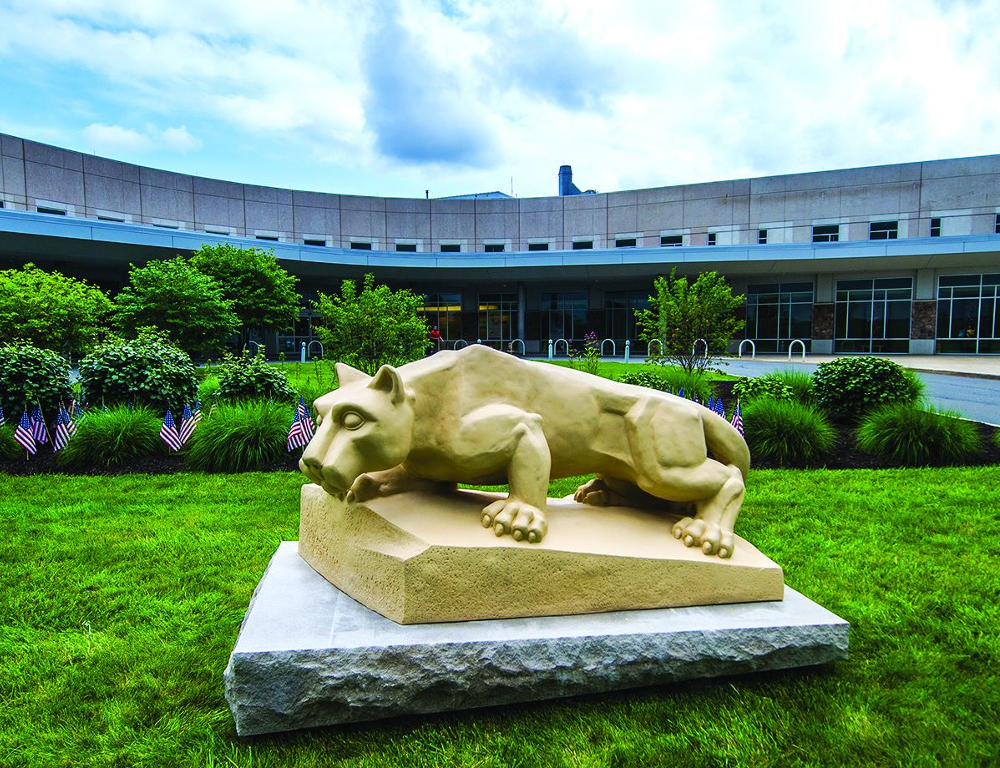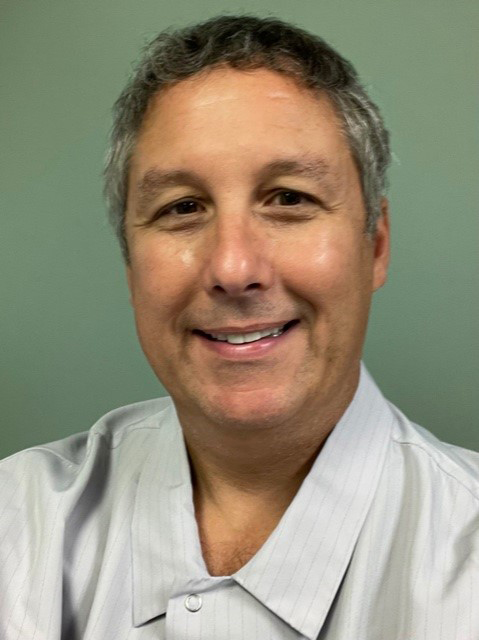Jump to topic
Search
Program Details
The one-year general practice Dental Residency at Penn State Health St. Joseph is designed to expand the graduate dentist’s knowledge of the relationship between oral and systemic conditions as well as reinforce their skills as a general dentist. It is fully accredited by the Council on Hospital and Institutional Dental Services of the American Dental Association.
A broad range of clinical experiences is provided in the hospital setting, involving the dental residents with the medical, emotional and social problems of patients as well as their dental care.
Residents work on a rotating basis in the medical center’s dental unit and are the primary providers of direct oral health care in all phases of dentistry. Residents treat both outpatients and inpatients, attend operating room dental cases, 0and handle dental calls from the Emergency Care Unit. Under the consultation and supervision of attending dental specialists, each resident selects a nucleus of patients for whom total treatment plans are developed and implemented.
Learn More about the Residency
Applications are accepted from Aug. 1 through Jan. 1 via the American Dental Association’s PASS format.
Candidates will be selected for interviews upon receipt of their completed application.
For details, contact the program.
Penn State Health
Penn State Health is a multi-hospital health system serving patients and communities across 29 counties of Pennsylvania. Its mission is to improve health through patient care, research, education and community outreach.
In December 2017, the system partnered with Highmark Health to facilitate creation of a value-based, community care network in the region. The shared goal of Highmark and Penn State Health is to ensure patients in the community are within:
- 10 minutes of a Penn State Health primary care provider
- 20 minutes of Penn State Health specialty care
- 30 minutes of a Penn State Health acute care facility
Learn more about Penn State Health

Penn State Health St. Joseph Medical Center
Penn State Health St. Joseph
2500 Bernville Road, Reading, Pa. 19605 (Bern Township, Berks County)
- A two-campus community medical center in Berks County (southeastern Pennsylvania), with an acute care hospital in Bern Township and a downtown Reading campus
- Approximately 1,800 employees, including 400 board-certified and fellowship-trained physicians in all specialties
- Nationally accredited centers for chest pain, stroke, heart failure and cancer care
- Roughly 47,000 emergency department visits and 7,500 inpatient admissions annually
- Program year: July 1 through June 30
- Stipend: $58,000 annually
- Additional benefits: Vacation/sick time, holidays, malpractice, disability and major medical insurance, leave, $1,000 stipend for continuing education, free parking and lunch
General Contact Information
Phone: 610-378-2445
Curriculum Details
The goal of the Dental Residency is to prepare each graduate to:
- Act as a primary care provider for individuals and groups of patients. This includes: providing emergency and multidisciplinary comprehensive oral health care; providing patient-focused care that is coordinated by the general practitioner; directing health promotion and disease prevention activities; and using advanced dental treatment modalities.
- Plan and provide multidisciplinary oral health care for a wide variety of patients including patients with special needs.
- Manage the delivery of oral health care by applying concepts of patient and practice management and quality improvement that are responsive to a dynamic health care environment.
- Function effectively within the hospital and other health care environments.
- Function effectively within interdisciplinary health care teams.
- Apply scientific principles to learning and oral health care. This includes using critical thinking, evidence or outcomes-based clinical decision-making and technology-based information retrieval systems.
- Utilize the values of professional ethics, lifelong learning, patient-centered care, adaptability and acceptance of cultural diversity in professional practice.
- Understand the oral health needs of communities and engage in community service.
Upon completion of the Dental Residency, the resident will be able to:
- Display proficiency in operative dentistry on primary and secondary teeth (didactic and clinical)
- Composite and amalgam
- Diagnose, prevent and treat disease of the enamel and dentin of natural teeth
- Special emphasis on the diagnosis of caries (clinically, radiographically, caries stain and diagnodent)
- Obtain informed consent (didactic and clinical)
- Understand the need for informed consent and feel comfortable in obtaining an informed consent
- Function effectively within the interdisciplinary health care team, including consultations and referrals (didactic and clinical)
- Become proficient in writing referrals and handling requested consults to be able to function within interdisciplinary health care team
- Provide patient-focused care coordinated by the general dentist (didactic and clinical)
- Become proficient in treatment planning
- Be able to deliver comprehensive care with appropriate multidisciplinary treatment
- Educate their patients on preventive medicine and how it especially relates to their oral health
- Educate patients and community on dental health and prevention of oral disease
- Use advanced dental modalities for the treatment of patients (giving the resident options to make better diagnosis, improve treatment and provide more predictable treatment outcomes)
- Removable, crown and bridge and implants
- Place and restore implant (minimum of two implant placements)
- Quadrant scaling, crown lengthening, flaps, and membrane placement
- Rotary endo
- Molar cases (minimum of four)
- Retreat cases
- Adequately diagnose and treat pathologies related to the oral cavity, mandible and maxilla and adjacent structures
- Become competent in basic oral surgery techniques and comfortable with minor oral surgery techniques
- Gain experience in placing bone grafting (socket preservation) material and placing simple implants (minimum of two)
- Provide experience to deliver a comprehensive range of dental service for all patients, including underserved, mentally or physically compromised
- Patient management
The resident’s performance will be evaluated quarterly to ensure completion of the above competencies at an advanced level of skill beyond the pre-doctoral training.
A comprehensive orientation for residents is scheduled for the first two days of the program to acclimate new residents to the hospital setting, dental unit procedures, rotations, emergency call, physical evaluation and inpatient care.
A program manual is provided to each resident that fully describes resident responsibilities and requirements, schedules of rotation, orientation, meetings, seminars and on-call assignments.
Clinical lectures and seminars are designed to encourage discussions, and are scheduled approximately twice a month with prior assignments available. These sessions are coordinated with the resident’s schedule of clinical experience and department rotation.
Monthly staff meeting are also held to evaluate the resident’s performance and dental education progress, including clinical conference presentations by the dental residents.
Through their rotations, residents have the opportunity to work with other health professionals in the departments of emergency medicine, anesthesia, oral surgery, radiology, pathology and internal medicine.
Emergency Medicine
Length: Two weeks (80 hours)
Objective: To instruct the resident in the following:
- Function of the emergency department
- Role and responsibilities in the emergency department
- Interaction with other disciplines
- Policies and protocol for emergency care
Practical experiences: Should include:
- Obtaining and interpreting the patient’s chief complaint, medical and social history and review of systems
- Obtaining and interpreting clinical and other diagnostic data from other health care providers
- Using the services of clinical, medical and pathology laboratories
- Performing a history and physical evaluation and collecting other data in order to establish a medical assessment
Anesthesia
Length: Two weeks (80 hours)
Objectives (oral surgery):
- To acquaint the resident with anesthesia used for dental procedures
- To gain experience in taking a history and physical for a dental procedure
- To be introduced to different types of implant systems
- To gain experience in the treatment planning and placement to implants
- To become familiar with the type of procedures that can be offered by an oral surgeon office
Objectives (anesthesia):
- To acquaint the resident with general anesthesia principles and techniques
- To understand the pharmacodynamics of anesthetic drugs
- To gain experience and confidence in cardiopulmonary support and management of office emergencies
Practical experiences: Should include:
- Preoperative evaluation
- Assessment of the effects of behavioral and pharmacologic techniques
- Venipuncture technique
- Patient monitoring
- Airway management
- Understanding of the use of pharmacologic agents
- Recognition and treatment of anesthetic emergencies
- Assessment of patient recovery from anesthesia
Radiology
Length: One week (20 hours)
Objectives:
- Basic and certain special radiology techniques commonly used in modern diagnostic radiology
- The full scope of radiograph and radiotherapy
Medicine
Length: Two weeks (40 hours)
Objectives:
- Become acquainted with medical practice and apply the knowledge learned in physical diagnosis
- Develop a greater knowledge of internal medicine, pediatrics and family medicine
- Learn to establish liaison with these disciplines
- Integrate the patient’s dental needs with the total patient care
Practical experiences: Should include:
- Obtaining and interpreting the patient’s chief complaint, medical and social history and review of systems
- Obtaining and interpreting clinical and other diagnostic data from other health care providers
- Using the services of clinical, medical and pathology laboratories
- Performing a history and physical evaluation and collect other data in order to establish a medical assessment
Pathology
Length: One week (20 hours)
Objectives:
- To understand the indications for laboratory examinations and tests
- To be able to interpret and utilize laboratory data
- To interpret any laboratory data and findings in diagnosis and management of diseases of patients hospitalized for dental treatment
- To learn basic skills in collecting specimens, e.g., venipuncture
Located at 145 N. Sixth St., Reading, Pa., the dental unit has seven newly renovated operatories as well as a conference room, business office, residents’ office area, dental laboratory and reception area.
All treatment areas utilize the concept of four-handed dentistry. The unit’s support staff includes one dental hygienists, six dental assistants and administrative support.
Unit hours are 8 a.m. to 4:30 p.m. weekdays. The dental residents, dental preceptors and dental director are responsible for staffing the unit on a daily basis.
Latest News from Penn State Health St. Joseph


